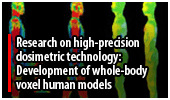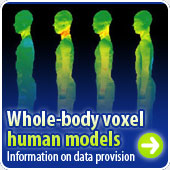Numerical simulation using whole-body voxel human models
Analysis of the VHF/UHF bands (30 MHz - 3 GHz)
Analysis of SAR distribution during plane-wave exposure
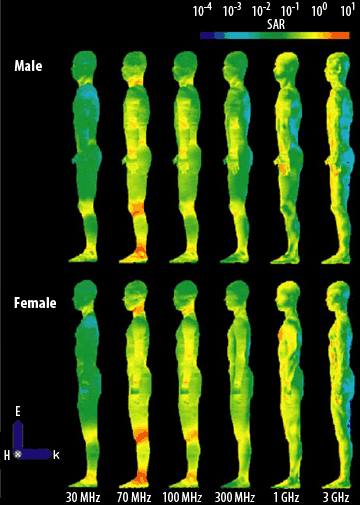
The finite-difference time-domain (FDTD) method is used for analyzing SAR distribution in human bodies exposed to plane waves in the VHF band (30 MHz ~ 300 MHz) and the UHF band (300 MHz ~ 3 GHz). The example here shows the SAR distribution (surface) when the adult male and female whole-body voxel models are exposed from the front to vertical polarized plane waves (1 mW/cm²). In this Figure, areas with extensive radio wave absorption are indicated in red, and those with little or no absorption in blue.
This analysis requires a long calculation time and huge amounts of memory, so a supercomputer is employed.
Higher-precision analysis using even higher-definition models (with 2 mm resolution or more) is recently becoming increasingly feasible, thanks to enhanced computer processing capabilities and larger-scale memory.
Analysis of the SAR distribution in the human head during mobile phone use
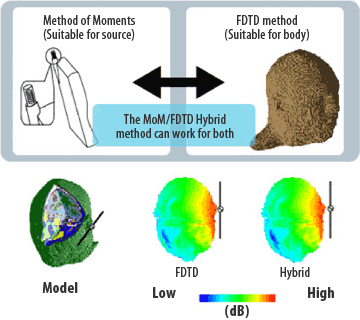
A detailed characterization of SAR distribution in the human head during mobile phone use is carried out, using numerical simulations employing the head model. We make use of the advantages of the Method of Moments (MoM) technique suitable for establishing a model of an electromagnetic wave source, and that of the FDTD method suitable for establishing a model of the body tissue, to develop the FDTD/MoM-hybrid method that analyzes interactions between the source and the body, and carry out detailed computation of the electric field inside the human head during mobile phone use.
Analysis of SAR during mobile phone use inside an elevator
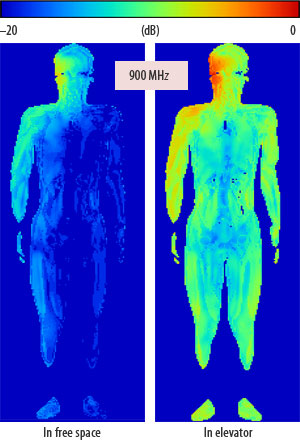
SAR distribution
The SAR distribution inside a human body when a mobile phone is used inside an elevator is evaluated, using an anatomical model (modeling a mobile phone with a dipole antenna). Although this computation uses a supercomputer, it takes the size of the actual elevator into consideration. Therefore, if the overall elevator is divided into 2-mm blocks, like in the human body, computation becomes difficult, even with a supercomputer, requiring a large-scale memory. We therefore used the FDTD method using a non-uniform mesh to save memory, enabling computation by a supercomputer.
- Analysis of the VHF/UHF bands (30 MHz - 3 GHz)
- Analysis of the intermediate frequency band (300 Hz - 10 MHz)

